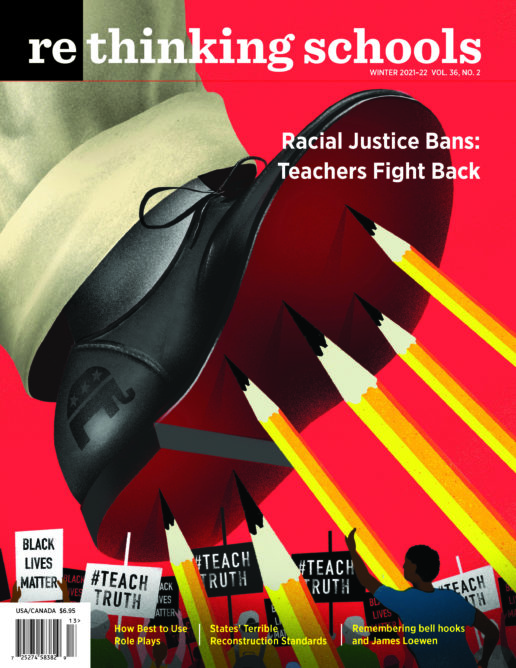Our picks for books, videos, websites, and other social justice resources: Winter 2021-22, Volume 36.2
Illustrated Books
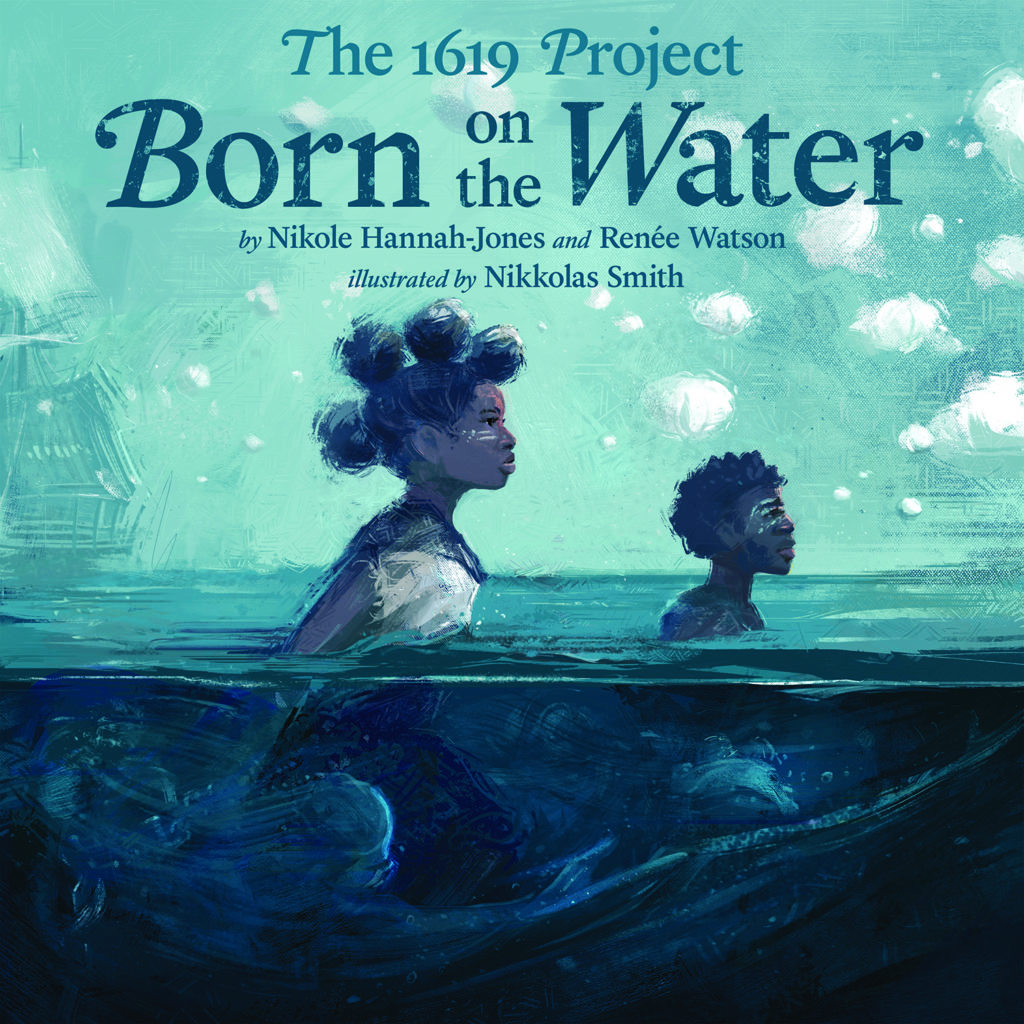
Born on the Water is the lyrical, poignant answer to a teacher’s question: “Who are you?” The African American girl in class brings the question home to her grandmother, who pulls the family together to narrate a story of joy, of creativity, of theft, of struggle, of survival. Too much teaching about Black history begins in slavery. Born on the Water begins in Africa, where “Their hearts had a knowing./ They knew how to make work joyful . . ./ Their minds had a knowing,/ worldly, curious, sharp.” Grandma tells a story of theft from Africa: “Ours is no immigration story.” Their ancestors “braided seeds into their hair, defiantly hiding/ tiny pieces of home/ to plant one day/ in new soils.” These kidnapped Africans were prisoners of the White Lion, the first ship to bring enslaved people in 1619 to the land destined to become the United States. Alert to the horrors and exploitation by white enslavers, Born on the Water focuses on defiance, love, and hope: “Hope is refusal to give up, to die out. . . . No one could steal the people’s joy.” In their authors’ note, Nikole Hannah-Jones and Renée Watson write that they want Black American children “to come away empowered by the knowledge that there is no shame in descending from American slavery . . . they come from a resilient people who loved, resisted, and persevered.” Nikkolas Smith’s vivid illustrations emphasize this message with warmth and beauty.
***
Together
By Mona Damluji
Illustrated by Innosanto Nagara
(Triangle Square, 2021)
44 pp.
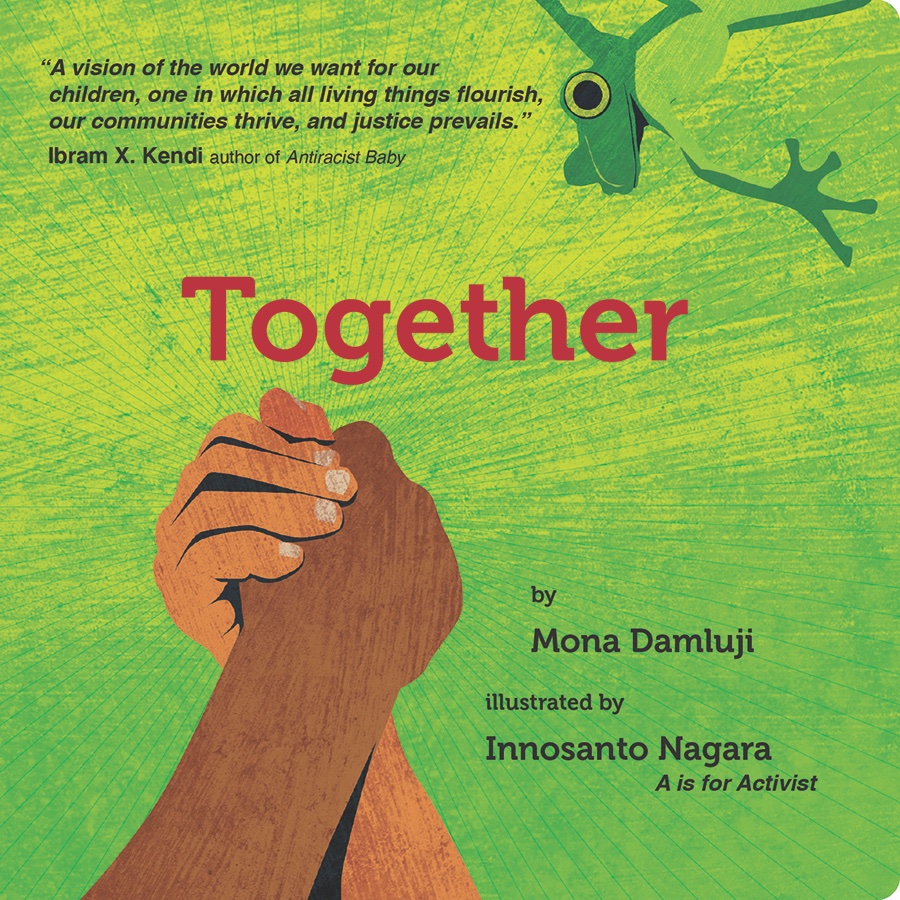
This beautifully written poem along with its gorgeous illustrations has a message: Working together is more powerful than the acts of a single individual. The poem touches on trees, birds, bees, voices, instruments, and mountains to show their power when they act or stand together.
The book is ideal for children in preschool through high school. Unfortunately, it has not yet been published in a larger picture book format, which would lend itself more easily to read-alouds in elementary classrooms.
***
Evicted!
The Struggle for the Right to Vote
By Alice Faye Duncan
Illustrated by Charly Palmer
(Calkins Creek Books, 2022)
64 pp.
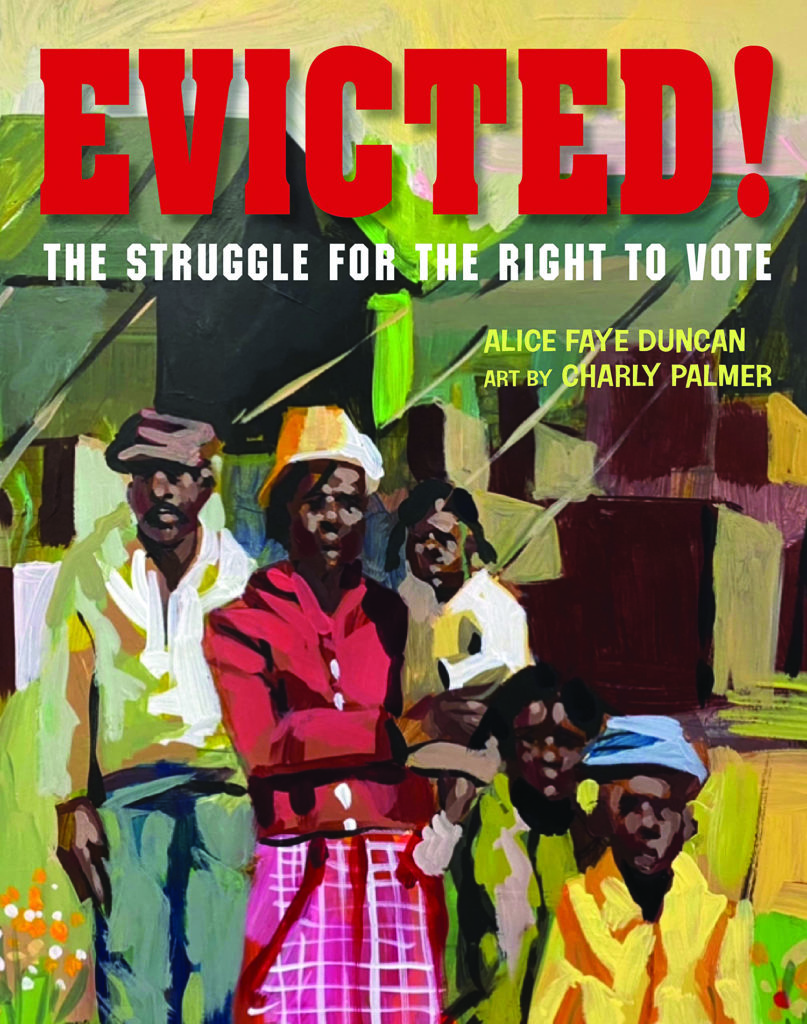
African American sharecroppers in Fayette County, Tennessee, tried to exercise their legal right to register to vote in the late 1950s. A key motivation was to break the practice of all-white juries that denied African Americans a fair trial. The white backlash was brutal. Black people who attempted to register were “barred from buying groceries or gasoline, and from receiving bank loans and medical services in the region.” They were evicted from their sharecropper shacks. Two of the few Black farmers who owned land provided space for the homeless sharecroppers to live in tents while they organized to defend their right to vote. To prepare to tell this story, children’s book author Alice Faye Duncan conducted extensive interviews with people from that historic voting rights movement. The result is a well-researched people’s history picture book, written for upper elementary and also informative and engaging for adults. Duncan’s narrative describes, and Charly Palmer’s illustrations show, the brave organizing by local people and the role of national media in soliciting vital support from around the country. There is no fairy-tale ending. Although the sharecroppers eventually won political rights, many lost their jobs and had to leave the area. And as Duncan writes in the epilogue, “Injustice remains as persistent a foe as it was in 1959. More than 50 years after Black voters in Fayette County were evicted and reduced to living in muddy tents, voter suppression and intimidation continues in every corner of the nation.” She urges young readers to carry on the struggle.
***
Curriculum
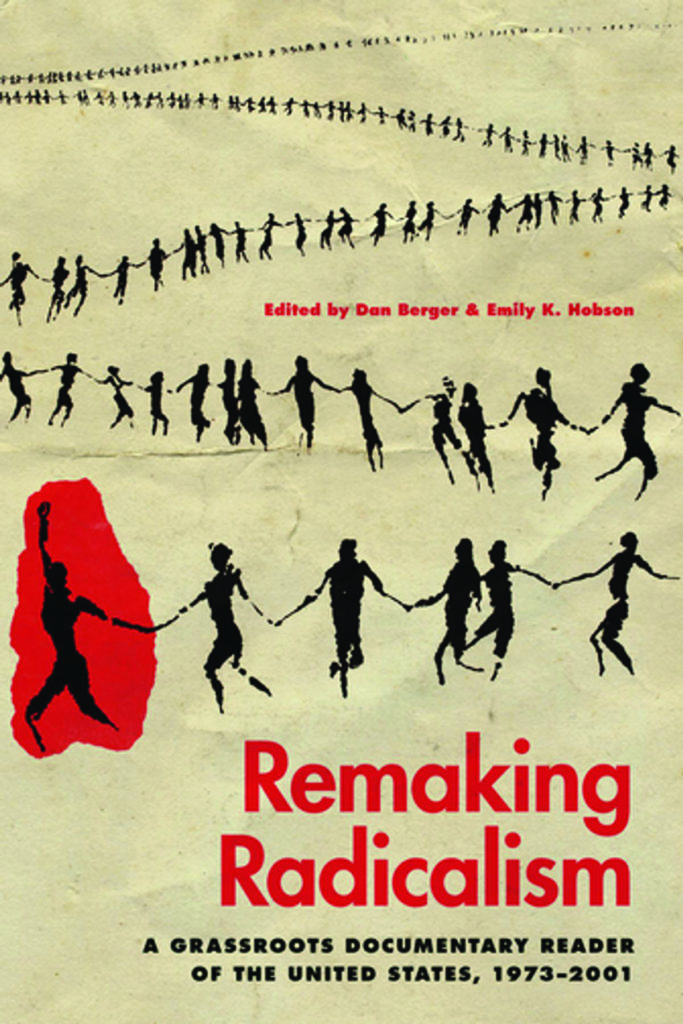
This book is full of short, powerful documents written by activists during the last quarter of the 20th century, an era too few of us ever get to in our social studies curricula. Educators might be enticed to rethink that choice after paging through this rich collection. Editors Dan Berger and Emily K. Hobson write that Remaking Radicalism “moves against the received wisdom about the hegemony of conservatism between the decline of the war in Vietnam and the rise of the war on terror.” Just a taste of the hundreds of selections that challenge the received wisdom: the Clamshell Alliance’s “Declaration of Nuclear Resistance” (1977), the Bay Area Free South Africa Movement’s “Statement of Purpose” (1985), the Earth Liberation Front’s “Frequently Asked Questions” (1990s), Joseph Beam’s “Caring for Each Other” (about the AIDS epidemic), and the California Coalition for Women Prisoners’ “Critical Resistance: Expanding Our Vision of What’s Possible” (1988). The book’s first document is the Combahee River Collective’s now-famous “A Black Feminist Statement.” Combahee’s critical call for a recognition that “major systems of oppression are interlocking” is as relevant as ever. These documents will help our students see the glorious multitude of attempts in the recent past to defeat those interlocking systems — many of which are being built upon by movements for justice today.
***
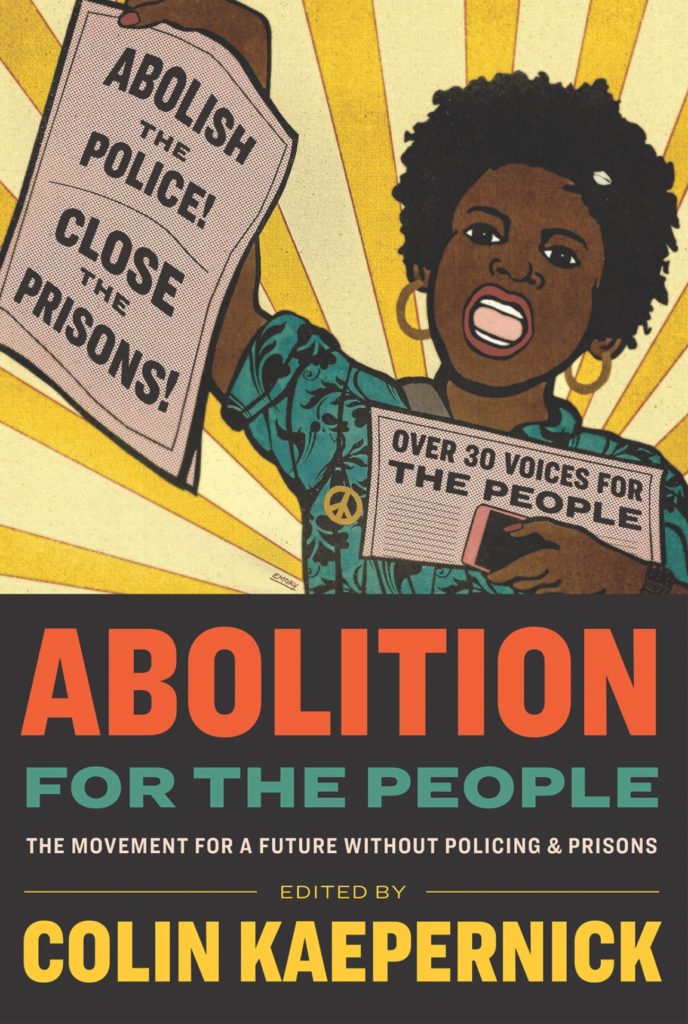
According to the editor’s preface, Abolition for the People makes a straightforward argument: “Neither prisons nor police keep people safe, nor do they create the conditions necessary for communities to thrive.” The authors (Angela Davis, Kimberlé Crenshaw, Robin D. G. Kelley, Ruha Benjamin, Mumia Abu-Jamal, and many more) contribute highly readable, blessedly non-jargony essays to this collection and persuasively show that the prison-industrial complex is dangerous and cannot be reformed. But abolitionists are not just against; they are also for — a lot. As Mariame Kaba states in her essay “So You’re Thinking About Becoming an Abolitionist,” the goal of abolitionists is to build a different world that “requires that we not only change how we address harm, but that we change everything.” As Dan Berger and David Stein explain in another essay in the book, “Abolition is and has always been a slate of affirmative demands for the world we need.” The uprisings of 2020 made the 21st-century abolition movement part of the national discourse — “Defund the police!” With this book of short, teachable essays, teachers of middle and high school students can bring the movement into their classrooms.
***
Video
The Neutral Ground
Directed by CJ Hunt
(ITVS/POV, 2021)
90 min.
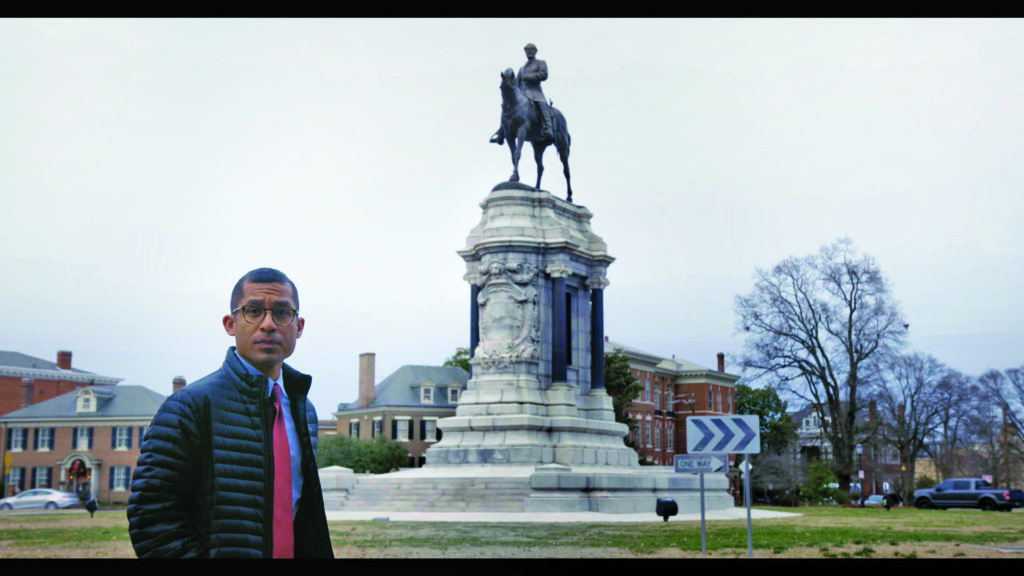
Middle school teacher, stand-up comic, and Daily Show correspondent CJ Hunt has made a brilliant, poignant — and, yes, funny — film about the movement to pull down monuments commemorating the Confederacy. Hunt begins in New Orleans, with the debate about removing four Confederate monuments: “You can’t scream Black lives matter if you live in a city where everything around you is telling you that they don’t,” explains Quess Moore of the Take ’Em Down NOLA coalition. But to understand where the monuments came from in the first place, Hunt takes us on a tour of the Lost Cause — the elaborate mythology created after the Civil War “to change the narrative of defeat to one of celebration and honor,” in the words of historian Karen Cox, author of Dixie’s Daughters: The United Daughters of the Confederacy and the Preservation of Confederate Culture. Although Reconstruction was a moment of hope and democratic possibility for once-enslaved African Americans, their former enslavers were determined to maintain white supremacy. As Hunt describes: “It is this moment of racial backlash and terror. This is the moment public Confederate monuments are born.” But The Neutral Ground is no tiresome talking head video. Hunt takes us to Camp Moore for a Confederate reenactment; to the Whitney Plantation, where slavery is remembered from the standpoint of the enslaved; to confrontations between monument defenders and anti-monument demonstrators; to the terrifying neo-Nazi demonstrations in Charlottesville; and even into his father’s kitchen, where his dad needles Hunt to rethink his own racial history. Ultimately, this wonderful middle and high school-friendly film is a testament to activism and to organizing. As Hunt remarks: “When you witness century-old statues of slave owners finally come off their pedestals, you start to feel like maybe anything is possible.”
***
Reviewed by Bill Bigelow, Ursula Wolfe-Rocca, and Bob Peterson

